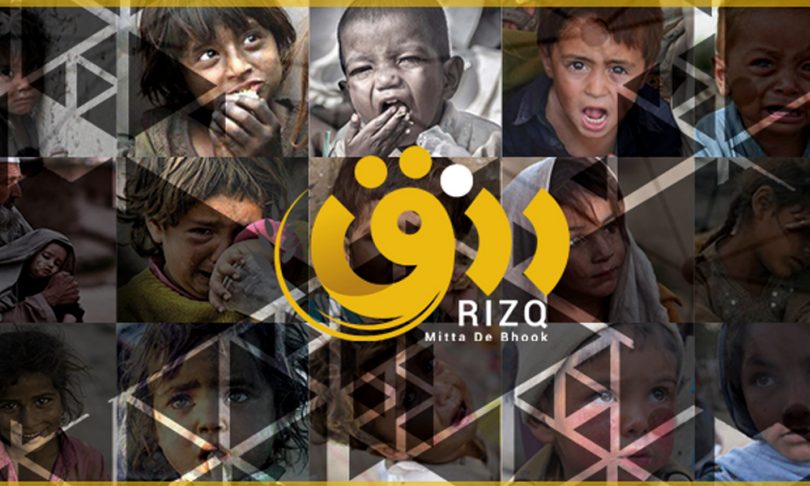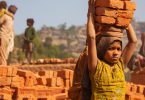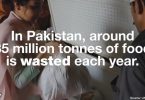The main cause of a health issue is “Poverty“. The World Food Programme states that 43 per cent of the country’s population remains food insecure, and out of that, 18 per cent of people are facing an alarming dearth of food. It further explains that six people out of ten in Pakistan are food insecure.
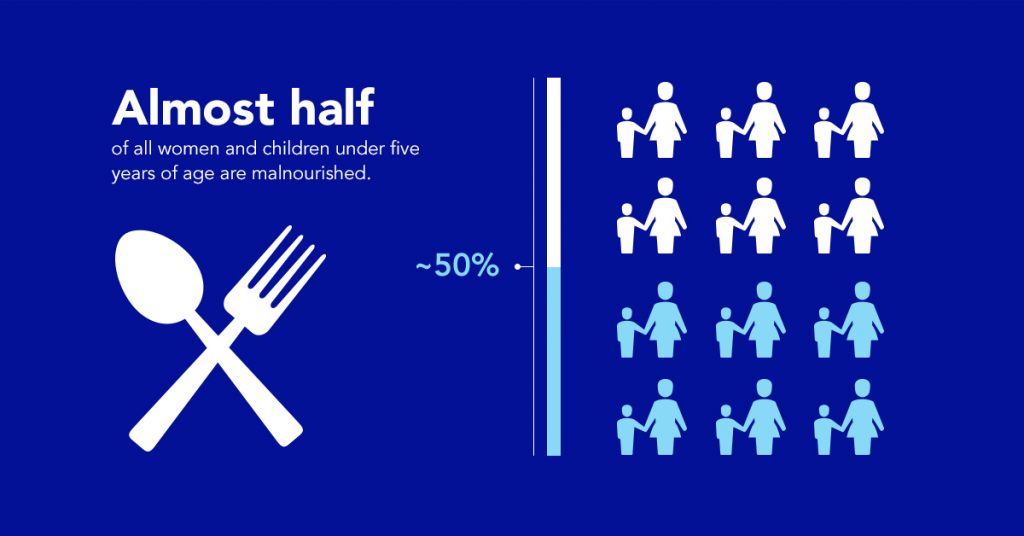
Pakistan is a third world country where millions of people, every day, go to bed without having a meal. We are a nuclear power; we have a very rich land; there is an abundance of water; climate and weather are agriculture-friendly, and the industrial sector is on the boom. Despite that, we hear about incidences where a mother sells her children because of hunger, and of children perishing because of nutrient insufficiency. According to the Global Hunger Index in 2016, out of 118 developing countries, Pakistan stands at 107 and scores 33.4. Not having enough or the right food to eat affects the physical and cognitive development of children, negatively impacting their ability to learn and to become productive members of their communities. Hunger and malnutrition trap people in poverty. Malnutrition also plays a role in nearly half the deaths of children under the age of five by weakening their immune systems and making them more vulnerable to life-threatening diseases.
“Our world is one of the terrible contradictions. Plenty of food, but one billion people go hungry. Lavish lifestyles for a few, but poverty for too many others. Huge advances in medicine while mothers die every day in childbirth and children die every day from drinking dirty water. Billions spent on weapons to kill people instead of keeping them safe.” — Ban Ki-moon
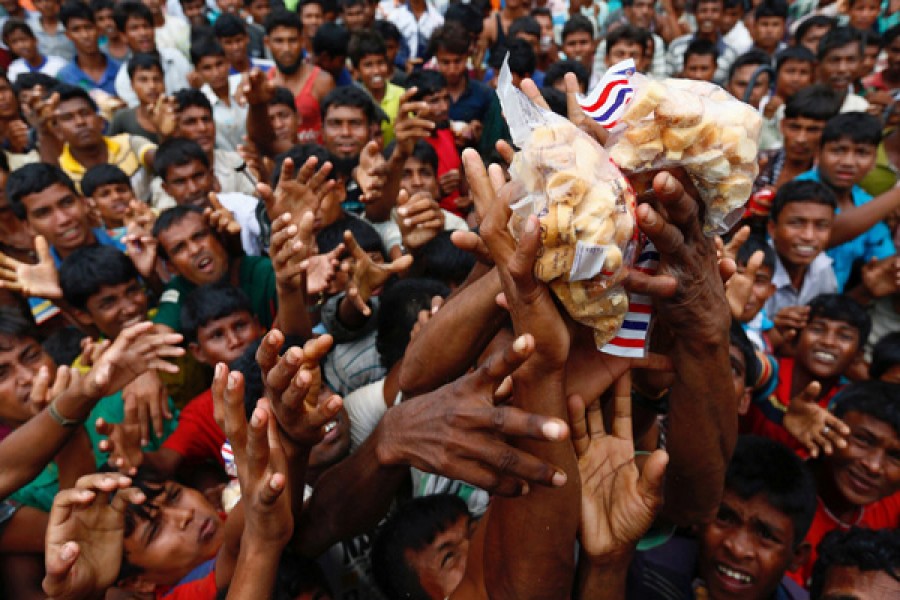
Facts
Ten facts that out-house light on the hunger situation of Pakistan.
- Pakistan ranks 77th out of 109 on the Global Food Security Index.
- Six out of Ten Pakistani food is insecure.
- Food insecurity persists although food production is sufficient to feed all Pakistanis.
- Almost half of women and children under five years of age are Malnourished.
- In 2015, WFP assisted over 3.6 million people.
- In 2015, WFP assisted nearly 420,000 moderately acute malnourished children and nearly 360,000 pregnant women and nursing mothers.
- WFP provided nearly a quarter of a million students with on-site rations of high energy biscuits and take home rations of fortified vegetable oil in school across six Federal Administered Tribal Areas (FATA).
- WFP has been a partner of the Pakistani Government for half a century.
- The Government of Pakistan is the second largest donor to WFP operations in the country, after the United States.
- Agriculture is vital to Pakistan: it employs almost half the workforce and contributes over a fifth of GDP.
Poverty
Poverty is one of the primary drivers of hunger in Pakistan. As the World Bank indicators in 2015 showed, 50 per cent of people in Pakistan live below the poverty line. Only by wiping out poverty, the issue of hunger can be tackled. But we also need to understand what Amartya Sen said: “Poverty can be exacerbated by problems in the production side partly because of food supply falling behind food demand tends to raise food prices, which can make many families much poorer, given their incomes.”
Wastage Of Food
Wastage of food is also one of the major reasons for hunger in our country. According to an estimation, almost 40 per cent of food is wasted in Pakistan. On one side, people are dying due to hunger, and on the other, there is an abundance of food that goes to waste.
Thar
District Tharparkar is said to be one of the most dangerous regions of the country in terms of people’s survival. Every year, hundreds of people die in the area owing to food insecurity, water scarcity, malnutrition and unavailability of proper healthcare. Poverty is one of the most significant factors affecting the lives of the people in this remote part of the country.
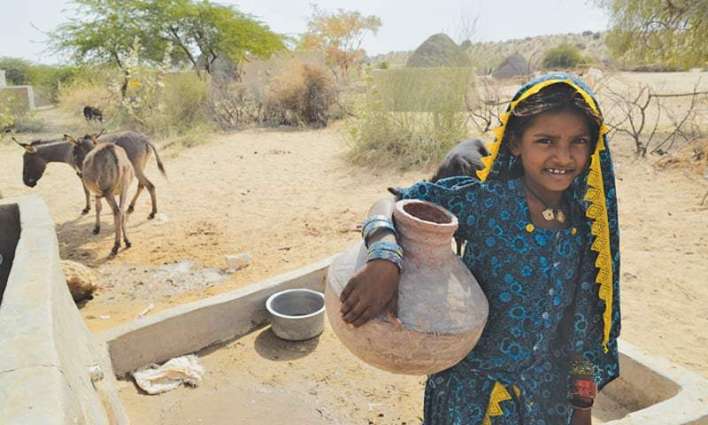
World Food Day
The objectives of World Food Day are to:
- Encourage attention to agricultural food production and to stimulate national, bilateral, multilateral and non-governmental efforts to this end.
- Encourage economic and technical cooperation among developing countries.
- Encourage the participation of rural people, particularly women and the least privileged categories, in decisions and activities influencing their living conditions.
- Heighten public awareness of the problem of hunger in the world.
- Promote the transfer of technologies to the developing world
- Strengthen international and national solidarity in the struggle against hunger, malnutrition and poverty and draw attention to achievements in food and agricultural development.
Mis)use of SDGs funds
The PML-N government had launched two programmes –first the Millennium Development Goals and then Prime Minister’s Global Sustainable Development Goals Achievement Programme — and allocated billions of rupees for improving social indicators across the country. It allocated Rs50 billion for these programmes in the last two budgets.
How To Lessen Hunger In Pakistan
To address the causes of hunger we have focused on preventing diseases such as worms and diarrhoea, food security interventions and promoting safe hygiene and sanitation practices. This has included direct activities to encourage behaviour change among mothers, children, and other community members. We have supported agriculture activities such as vaccination campaigns for livestock, established kitchen gardens to promote diverse household consumption, provided food vouchers and support for a social safety net cash injection to improve livelihoods security. Further to this and given the impact of the disaster on communities, we supported disaster planning in the agencies of agriculture, fisheries, livestock, local government and health at the province and national level. Our activities are where possible supported by research programs funded by DFID and the Innocent Foundation to change and improve the way hunger is addressed.
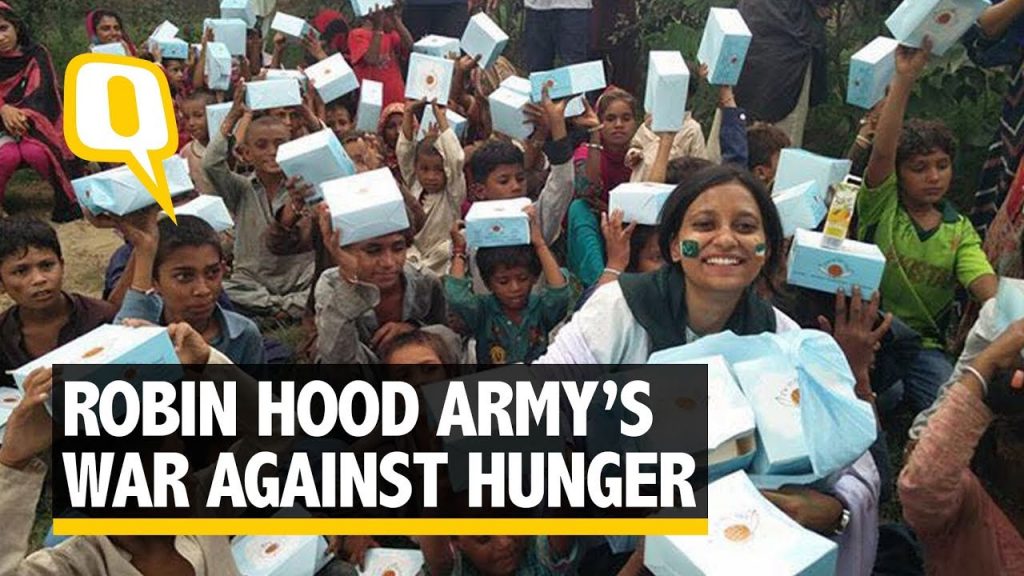
In the last two decades, Pakistan has experienced many natural disasters such as heavy torrential rains, floods and long periods of drought causing hunger in the country. At the government level, there are policy gaps in coping with hunger-like situations. There are no mechanisms of government that the increasing population of Pakistan could have ways to feed themselves. Institutional corruption is another factor that increases hunger and poverty. Government is spending less in the agriculture sector; fertile lands need to be taken care of by investing more and producing more to reduce hunger.

